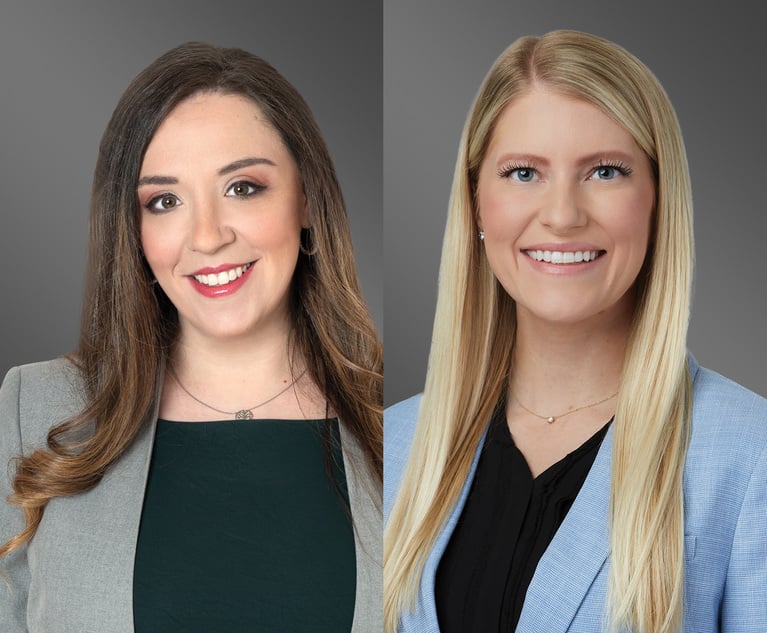How High Is Too High? Crunching Marijuana Taxes
How high should marijuana tax rates be? That's a question more and more states are grappling with as they extend approval for medical marijuana use to adult recreational consumption. A consultant who worked on California's rate explains the "Goldilocks standard."
June 23, 2017 at 01:33 PM
8 minute read
In the campaign playbook for legalizing marijuana, one of the most potent arguments from proponents is the potential explosion of big tax dollars. Bringing the recreational market out of the shadows and taxing it, advocates say, will provide millions of dollars—maybe billions—for drug treatment, public schools and a host of other programs.
But just how high should that tax rate be? It's a question more and more states are grappling with as they extend approval for medical marijuana use to adult recreational consumption.
Just this week, the two houses of the Massachusetts legislature passed competing bills overhauling the state's recreational-use law. The House of Representatives wants a 28 percent retail tax and plans to spend the resulting revenue on substance abuse treatment when sales go legal on Jan. 1. State senators approved a 12 percent tax, worried that the House's higher rate would drive users to the black market or to nearby Maine, where recreational cannabis will carry a 10 percent tax. A conference committee will try to find a compromise by July 1.
“The tricky part is, how do you take into account what you consider to be necessary revenue generation with the realities” of market forces, said Taylor West, deputy director of the National Cannabis Industry Association. “There is just a remarkable amount of variables and we don't have a lot of historic data.”
Read more: Legal Marijuana: Budding Industry, Burning Questions
The authors of Proposition 64, California's November 2016 ballot measure that legalized recreational marijuana, included a 15 percent excise tax on the retail price. Consumers will also pay state and local sales taxes and any additional levies approved by local governments when legalized operations launch on Jan. 1. Cultivators will pay a $9.25-per-ounce tax on marijuana flowers and $2.75-per-ounce tax on leaves.
Jason Kinney, a consultant who worked on the Proposition 64 campaign, said setting the tax rates was an issue of “intense deliberation,” especially since political and constitutional constraints would make it difficult to change them in the future.
“Our objective was the Goldilocks standard—set the tax rate too high, the black market flourishes; set it too low, you flood the market with cheap product and it gets into the wrong hands [and] you don't collect enough revenue to offset the community impacts of the new industry,” Kinney said. “The goal then was to set a rate that was 'just right.'”
Given that cities and counties could add on additional taxes “15 percent seemed like the fairest, most balanced approach,” he said.
Pioneer legalization states have chosen different taxation paths.
The state of Washington imposes a 37 percent excise tax on retail sales in addition to the standard 6.5 percent sales tax. Washington originally imposed a 25 percent tax at three stages of the marijuana supply change. But in 2015 lawmakers moved to the single 37 percent tax to eliminate the complexity of the previous system. The state expects to collect more than $304 million in excise taxes for the fiscal year ending this month.
Colorado imposes a 15 percent excise tax on wholesale transfers of cannabis, a 10 percent special sales tax on marijuana plus the state sales tax of 2.9 percent. To generate more money for the state's roads and schools, the governor recently signed legislation that will boost the 10 percent special sales tax to 15 percent while scrapping the 2.9 percent state sales tax on marijuana.
Alaska forgoes special sales taxes for a $50-per-ounce tax on marijuana buds when they're transferred from a grower to a retailer or manufacturer.
Oregon collects a 17 percent sales tax on marijuana. Cities and counties can impose an additional tax of up to 3 percent tax if local voters approve.
Because the legalization of recreational marijuana is so new, the analysis is thin on what taxation approach works best, West said.
“That research is basically going on right now with these real-world attempts to get this right,” she said.
In the campaign playbook for legalizing marijuana, one of the most potent arguments from proponents is the potential explosion of big tax dollars. Bringing the recreational market out of the shadows and taxing it, advocates say, will provide millions of dollars—maybe billions—for drug treatment, public schools and a host of other programs.
But just how high should that tax rate be? It's a question more and more states are grappling with as they extend approval for medical marijuana use to adult recreational consumption.
Just this week, the two houses of the
“The tricky part is, how do you take into account what you consider to be necessary revenue generation with the realities” of market forces, said Taylor West, deputy director of the National Cannabis Industry Association. “There is just a remarkable amount of variables and we don't have a lot of historic data.”
Read more: Legal Marijuana: Budding Industry, Burning Questions
The authors of Proposition 64, California's November 2016 ballot measure that legalized recreational marijuana, included a 15 percent excise tax on the retail price. Consumers will also pay state and local sales taxes and any additional levies approved by local governments when legalized operations launch on Jan. 1. Cultivators will pay a $9.25-per-ounce tax on marijuana flowers and $2.75-per-ounce tax on leaves.
Jason Kinney, a consultant who worked on the Proposition 64 campaign, said setting the tax rates was an issue of “intense deliberation,” especially since political and constitutional constraints would make it difficult to change them in the future.
“Our objective was the Goldilocks standard—set the tax rate too high, the black market flourishes; set it too low, you flood the market with cheap product and it gets into the wrong hands [and] you don't collect enough revenue to offset the community impacts of the new industry,” Kinney said. “The goal then was to set a rate that was 'just right.'”
Given that cities and counties could add on additional taxes “15 percent seemed like the fairest, most balanced approach,” he said.
Pioneer legalization states have chosen different taxation paths.
The state of Washington imposes a 37 percent excise tax on retail sales in addition to the standard 6.5 percent sales tax. Washington originally imposed a 25 percent tax at three stages of the marijuana supply change. But in 2015 lawmakers moved to the single 37 percent tax to eliminate the complexity of the previous system. The state expects to collect more than $304 million in excise taxes for the fiscal year ending this month.
Colorado imposes a 15 percent excise tax on wholesale transfers of cannabis, a 10 percent special sales tax on marijuana plus the state sales tax of 2.9 percent. To generate more money for the state's roads and schools, the governor recently signed legislation that will boost the 10 percent special sales tax to 15 percent while scrapping the 2.9 percent state sales tax on marijuana.
Alaska forgoes special sales taxes for a $50-per-ounce tax on marijuana buds when they're transferred from a grower to a retailer or manufacturer.
Oregon collects a 17 percent sales tax on marijuana. Cities and counties can impose an additional tax of up to 3 percent tax if local voters approve.
Because the legalization of recreational marijuana is so new, the analysis is thin on what taxation approach works best, West said.
“That research is basically going on right now with these real-world attempts to get this right,” she said.
This content has been archived. It is available through our partners, LexisNexis® and Bloomberg Law.
To view this content, please continue to their sites.
Not a Lexis Subscriber?
Subscribe Now
Not a Bloomberg Law Subscriber?
Subscribe Now
NOT FOR REPRINT
© 2025 ALM Global, LLC, All Rights Reserved. Request academic re-use from www.copyright.com. All other uses, submit a request to [email protected]. For more information visit Asset & Logo Licensing.
You Might Like
View All
What Will It Mean in California if New Federal Anti-SLAPP Legislation Passes?
9 minute read
'A Death Sentence for TikTok'?: Litigators and Experts Weigh Impact of Potential Ban on Creators and Data Privacy

California Lawmakers Reach $50M Deal to Fund Legal Fights Against Trump
3 minute read
'Another Broken Promise': California Tribes Sue Casinos for Allegedly Illegal Profit From Card Games
Trending Stories
- 1LexisNexis Announces Public Availability of Personalized AI Assistant Protégé
- 2Some Thoughts on What It Takes to Connect With Millennial Jurors
- 3Artificial Wisdom or Automated Folly? Practical Considerations for Arbitration Practitioners to Address the AI Conundrum
- 4The New Global M&A Kings All Have Something in Common
- 5Big Law Aims to Make DEI Less Divisive in Trump's Second Term
Who Got The Work
J. Brugh Lower of Gibbons has entered an appearance for industrial equipment supplier Devco Corporation in a pending trademark infringement lawsuit. The suit, accusing the defendant of selling knock-off Graco products, was filed Dec. 18 in New Jersey District Court by Rivkin Radler on behalf of Graco Inc. and Graco Minnesota. The case, assigned to U.S. District Judge Zahid N. Quraishi, is 3:24-cv-11294, Graco Inc. et al v. Devco Corporation.
Who Got The Work
Rebecca Maller-Stein and Kent A. Yalowitz of Arnold & Porter Kaye Scholer have entered their appearances for Hanaco Venture Capital and its executives, Lior Prosor and David Frankel, in a pending securities lawsuit. The action, filed on Dec. 24 in New York Southern District Court by Zell, Aron & Co. on behalf of Goldeneye Advisors, accuses the defendants of negligently and fraudulently managing the plaintiff's $1 million investment. The case, assigned to U.S. District Judge Vernon S. Broderick, is 1:24-cv-09918, Goldeneye Advisors, LLC v. Hanaco Venture Capital, Ltd. et al.
Who Got The Work
Attorneys from A&O Shearman has stepped in as defense counsel for Toronto-Dominion Bank and other defendants in a pending securities class action. The suit, filed Dec. 11 in New York Southern District Court by Bleichmar Fonti & Auld, accuses the defendants of concealing the bank's 'pervasive' deficiencies in regards to its compliance with the Bank Secrecy Act and the quality of its anti-money laundering controls. The case, assigned to U.S. District Judge Arun Subramanian, is 1:24-cv-09445, Gonzalez v. The Toronto-Dominion Bank et al.
Who Got The Work
Crown Castle International, a Pennsylvania company providing shared communications infrastructure, has turned to Luke D. Wolf of Gordon Rees Scully Mansukhani to fend off a pending breach-of-contract lawsuit. The court action, filed Nov. 25 in Michigan Eastern District Court by Hooper Hathaway PC on behalf of The Town Residences LLC, accuses Crown Castle of failing to transfer approximately $30,000 in utility payments from T-Mobile in breach of a roof-top lease and assignment agreement. The case, assigned to U.S. District Judge Susan K. Declercq, is 2:24-cv-13131, The Town Residences LLC v. T-Mobile US, Inc. et al.
Who Got The Work
Wilfred P. Coronato and Daniel M. Schwartz of McCarter & English have stepped in as defense counsel to Electrolux Home Products Inc. in a pending product liability lawsuit. The court action, filed Nov. 26 in New York Eastern District Court by Poulos Lopiccolo PC and Nagel Rice LLP on behalf of David Stern, alleges that the defendant's refrigerators’ drawers and shelving repeatedly break and fall apart within months after purchase. The case, assigned to U.S. District Judge Joan M. Azrack, is 2:24-cv-08204, Stern v. Electrolux Home Products, Inc.
Featured Firms
Law Offices of Gary Martin Hays & Associates, P.C.
(470) 294-1674
Law Offices of Mark E. Salomone
(857) 444-6468
Smith & Hassler
(713) 739-1250






